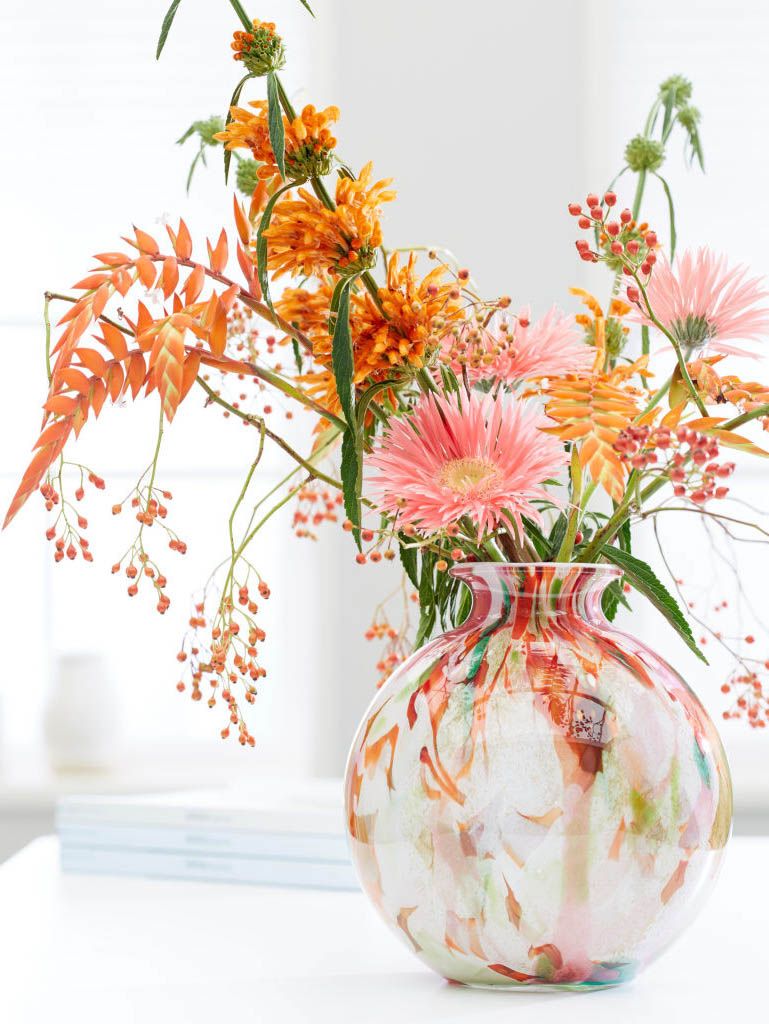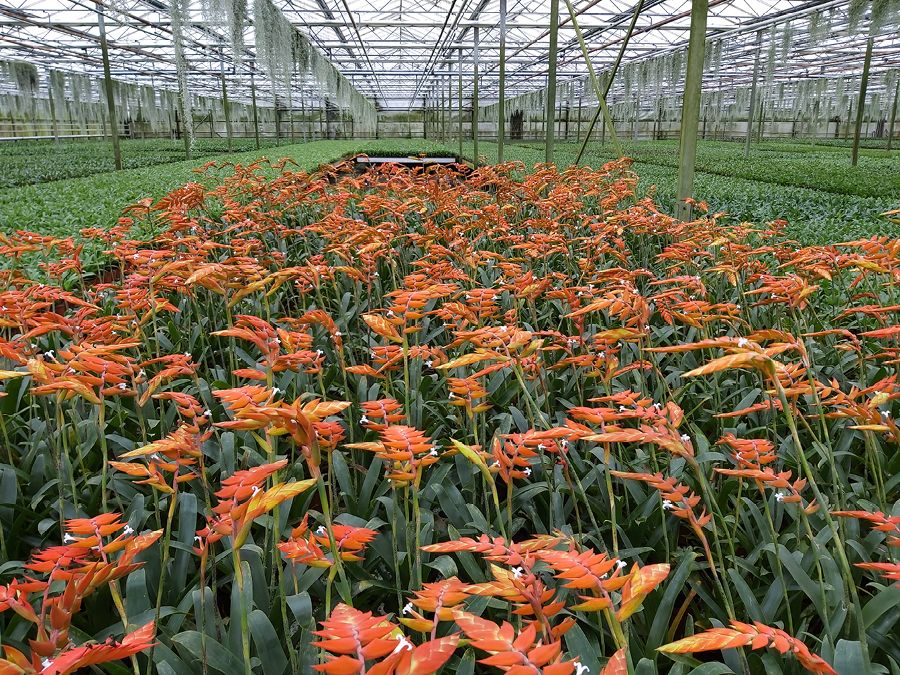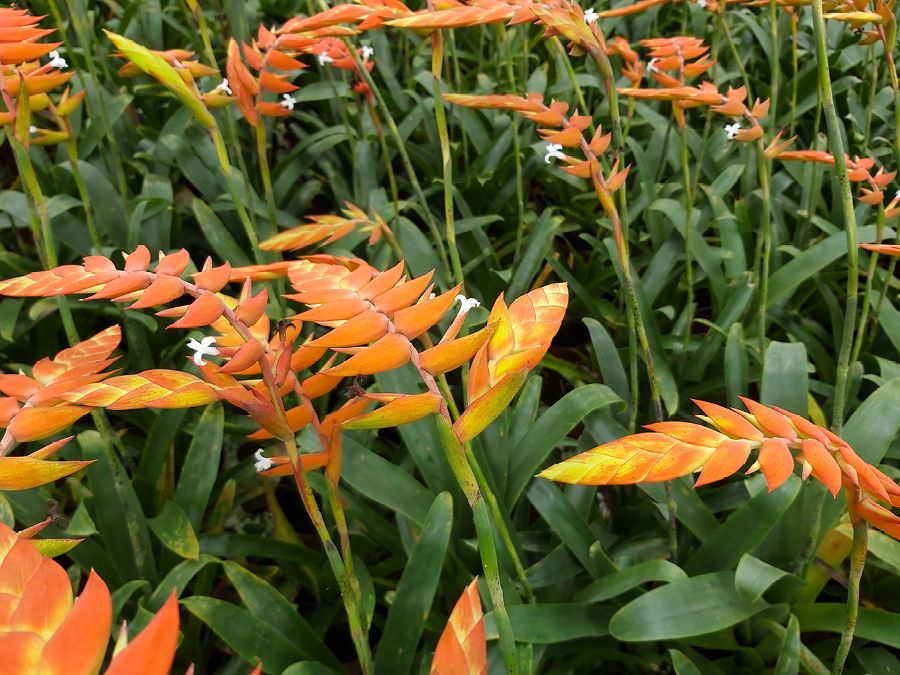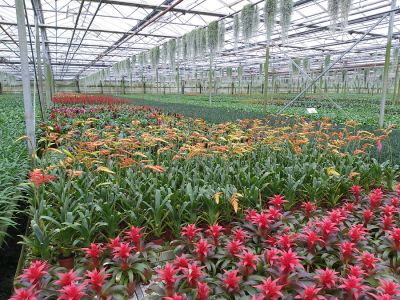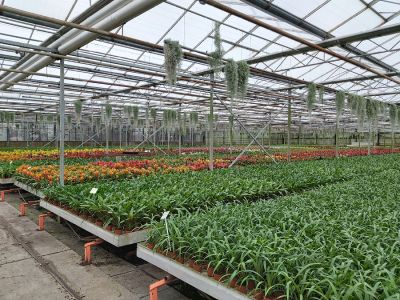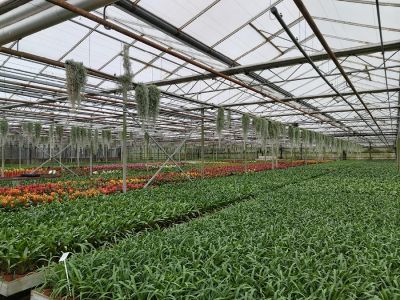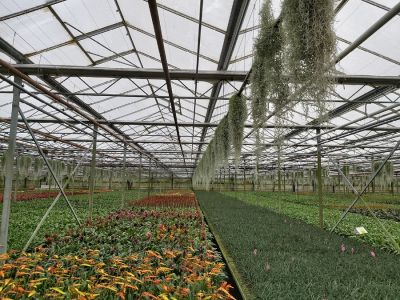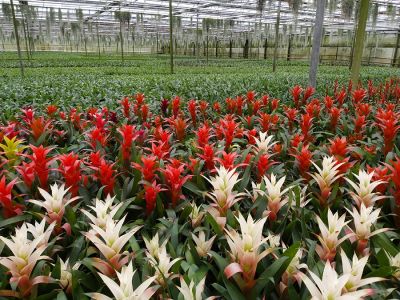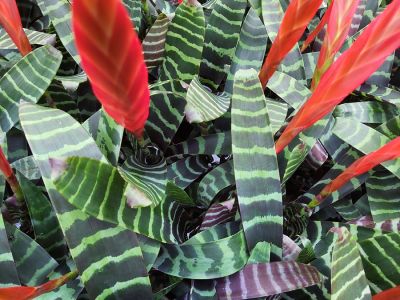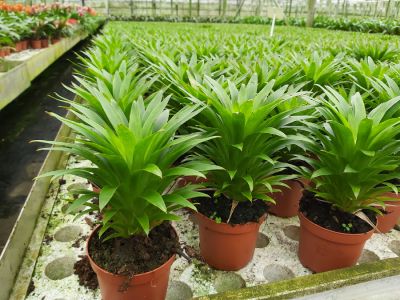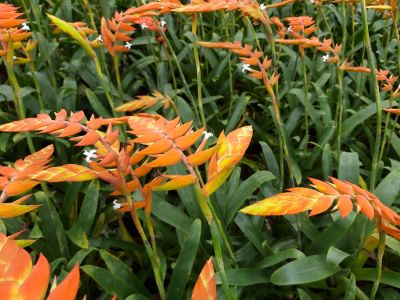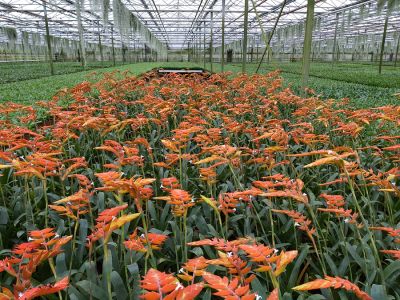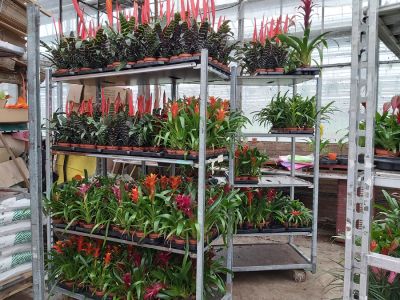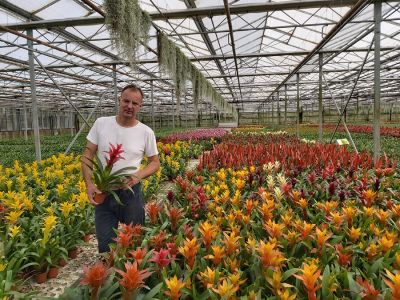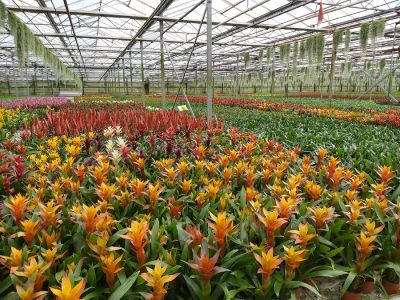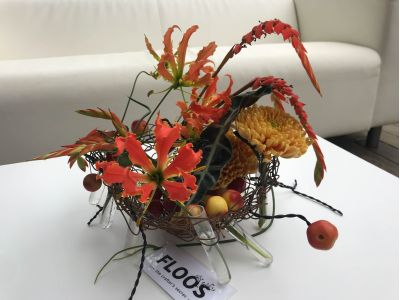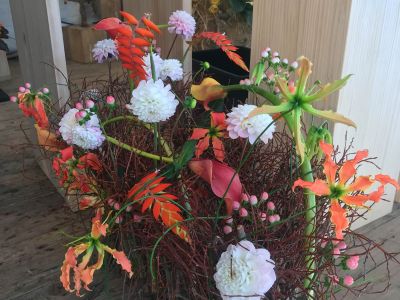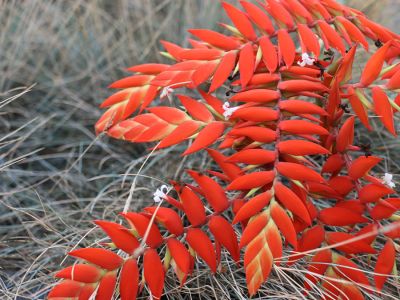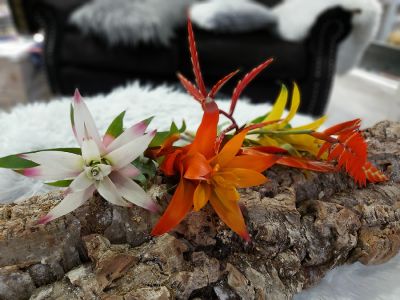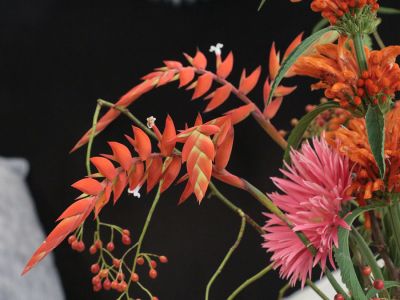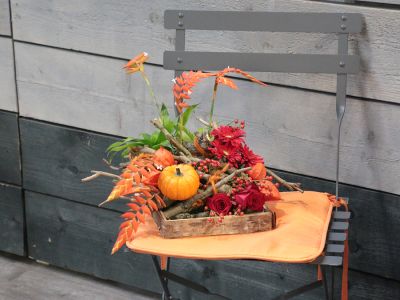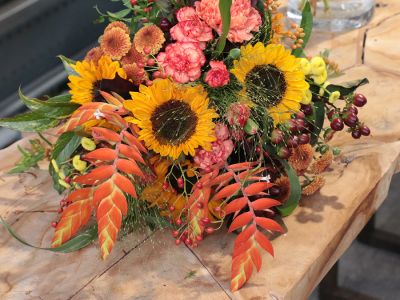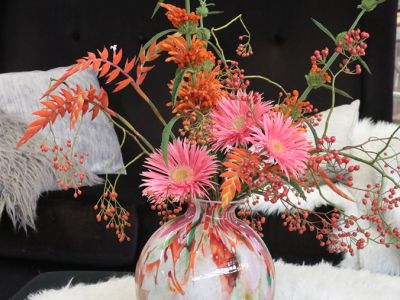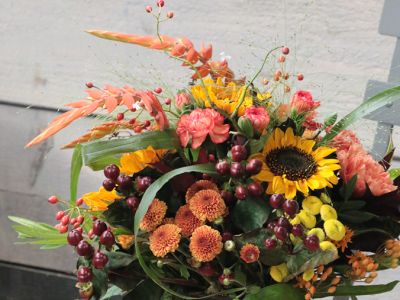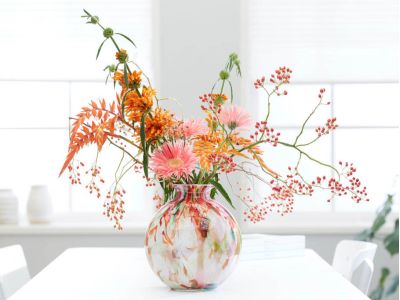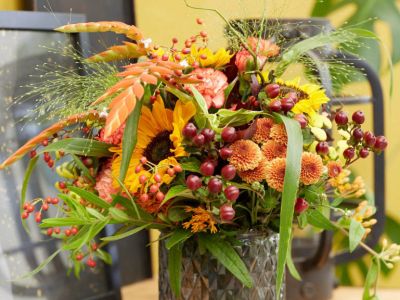Tillandsia Dyeriana

Calendar
In the spotlights
Bromeliads are usually sold as a pot plant. These tropical beauties can also be processed very well without a pot or as a cut flower. You can make the most beautiful arrangements: hanging in a tree, tied to a piece of bark or simply in a bouquet. In addition, they are available in all shapes and sizes and in the most cheerful and warm colors. The plant offers so many possibilities for a creative person! However, these tropical flowers are not used much as cut flowers. There are still some problems to be solved, but Daniël Ottenhof, from Thijs Ottenhof nursery, sees this as a challenge.
Bromeliad
The Bromeliad family is a large family that again consists of different groups; Tillandsia, Guzmania and Vriesea are the best known. The pineapple is also linked to this family, which is clearly visible in the shape of the leaf when you look at the top of the pineapple crown. Bromeliads naturally grow in the jungle of Central America, Brazil, Suriname and a small part of Africa. As many as 2000 botanical species are known.
One of the greatest characteristics of this family is the beautiful, bright tropical color of the flower. Or actually the bract of the flower, because the flower itself is not that exciting. They are plants with few roots; most species grow on a tree like epiphytes. As a result, they do not need a pot at all to continue growing. It is important that there is always water in the crown of the bract. This also applies if the plant is in a living room.
There are varieties that are 10 meters high, but they really only grow in a very small part of the world. Think of an area of perhaps 1200 km2. There are several places on earth where these varieties could grow, but Daniel thinks these are varieties whose seeds do not spread that fast and far, keeping the growth contained to a small area. Some Bromeliad varieties are spread by birds, others by seeds and wind.
In the spotlights
The hardest part of growing the Bromeliad species is often the leaves. If the leaf is not 100% pure, the plant is not good enough for Daniël to sell. A species that has very sensitive leaves is the Tillandsia Dyeriana. If the leaves of a plant have been removed, the flower is often particularly beautiful. This is how the cut variant of this beautiful plant came about. A nice variety deserving extra attention as a cut flower.
The Dyeriana has a fairly long flower compared to other Bromeliad species; making it a perfect candidate for marketing as a cut variety. It is very well suited for use in field bouquets or somewhat higher table pieces.
For other varieties, Daniël notices that it is more difficult to sell them as cut flowers, because most varieties are often shorter. Although these flowers are of course wonderful to use in short table pieces or lower Christmas pieces. The beautiful exotic colors give a very luxurious look to a bouquet or piece.
Because the flowers are incredibly strong, the flowers can for instance also be used in wedding bouquets that are tied to wire.
Same as with the other family members, with the Dyeriana, the ornamental value is not in the flower, but in the bract. With this variety however you can still see the real flowers very well. The first flowers must be in bloom when the plant or flower is sold. Only when the first two flowers are open, the flower turns into a really beautiful shade of orange.
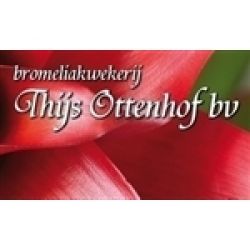
The cultivation
The greatest challenge in cut production is planning. Daniël certainly sees a bigger future for the Bromeliad in general as a cut flower and would very much like to promote the product to florists. The biggest problem is the availability, quantity and length. He prefers to sell the plants with bad leaves as cut flowers. But if he receives greater demand and if he has to cut good plants, the product will have to be valued differently. In short, matching supply and demand is the biggest challenge.
Bromeliad plants are not the easiest to grow. Their natural climate is very different, and the conditions in the greenhouse must be similar. Daniel grows many different varieties, but these varieties must be able to grow under fairly similar conditions.
The cuttings arrive at the nursery as small plants and are immediately put into larger pots. Growth varies per variety, but Daniël tries to put varieties together that flower approximately the same and need approximately the same food. Most plants are sold in mixed containers. If the flowering is roughly similar different varieties can be put in the same production path, making it more efficient.
Plants are treated with ethylene to make them bloom, this gas is dissolved in water, which actually forces the plant to bloom. It takes an average of a year for a plant to grow from cuttings to marketable plants.
Versatile cultivation
Daniel comes from a real horticultural family. The nursery is called Thijs Ottenhof, Daniëls father. It started in the 1950s, but the company has been in the family for at least five generations.
The company originally came from Sloten, a village near Amsterdam, where, just like with many gardeners, initially various types of vegetables were grown and later replaced with seasonal flowers. The first greenhouse was a wooden greenhouse. And as soon as people started heating the greenhouses, tropical plants were being grown.
About 30 years ago they moved the company to Almere where Daniël continues to work with great pleasure every single day.
Daniël likes this cultivation so much because it is a very versatile crop. Many different varieties, each with its own challenge. With one variety it is the leaf, with others the general growth pattern that creates the biggest problems. A plant only flowers once. When it has finished flowering, the plant will die, developing new cuttings at the bottom of the plant, from which new plants can grow.
Small team
Daniël works with four people. He likes to work on a small scale. As a result, they can communicate more quickly and efficiently and they can jointly cope well with the hectic pace of late day orders. In addition, Daniël and his team really focus on customization and there is room for exclusive products. With his team he provides various plants, cut flowers, but also ready-made arrangements in glass with luxury paper and water pearls. Everything to the wishes of the customer.
Where larger growers are not interested, because it does not fit in the mass, Daniël can grow this product. As he likes to say; "It makes it easier to take an occasional bump in the road."
FloraPodium, 3 October 2019






